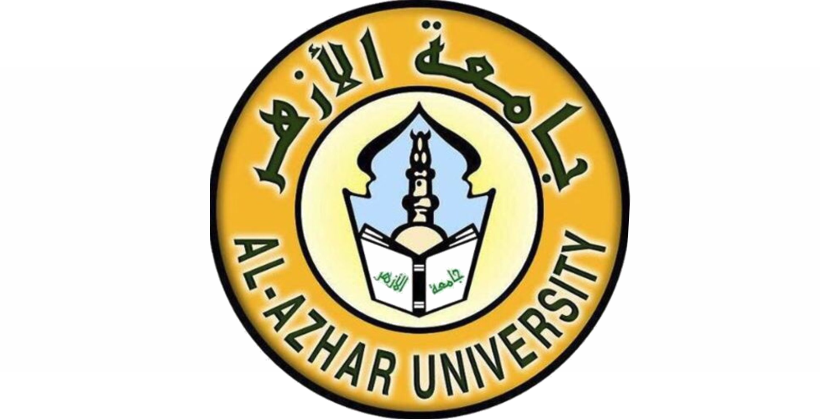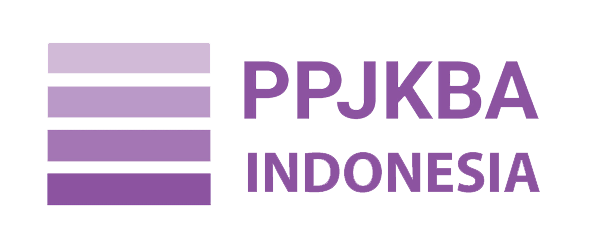The Effect of Arabic Literacy Program and Learning Motivation on Arabic Language Learning Outcomes
DOI:
https://doi.org/10.35719/arkhas.v5i1.2257Keywords:
Arabic Literacy Program, Learning Motivation, Learning OutcomesAbstract
This study investigates the influence of an Arabic literacy program and learning motivation on students' Arabic learning outcomes at SMP IT Al Amin Padang. The persistent issue of low Arabic achievement highlights the urgency of exploring strategies integrating language literacy with motivational factors. Prior research has often examined these variables in isolation; however, studies that analyze their combined impact, particularly within Arabic language education, are still limited. This research addresses that gap by assessing how both variables jointly affect student performance. Employing a quantitative correlational approach, the study was conducted on 30 students selected through stratified random sampling. Data were gathered using a validated Likert-scale questionnaire to evaluate students' perceptions of the literacy program and their motivation, while academic records were used to assess Arabic learning outcomes. Data analysis included tests of validity and reliability, normality checks, and Pearson correlation analysis. Findings reveal a significant correlation between the literacy program, learning motivation, and student outcomes, with a coefficient of determination of 75.2%. The results suggest integrating literacy initiatives and motivational support can significantly improve Arabic learning. This study offers valuable insights for developing more effective Arabic language teaching strategies at the secondary education level.
References
Ahadi, G. D., & Zain, N. N. L. E. (2023). Pemeriksaan Uji Kenormalan dengan Kolmogorov-Smirnov, Anderson-Darling dan Shapiro-Wilk. Eigen Mathematics Journal, 11–19. https://doi.org/10.29303/emj.v6i1.131
Akbar, R., Sukmawati, U. S., & Katsirin, K. (2023). Analisis Data Penelitian Kuantitatif: Pengujian Hipotesis Asosiatif Korelasi. Jurnal Pelita Nusantara, 1(3), 430–448. https://doi.org/10.59996/jurnalpelitanusantara.v1i3.350
Aldi, M., & Khairanis, R. (2024). The Synergy of Religion and Malay Culture in Improving the Empowerment of Islamic Communities Towards Achieving SDGS. PERADA, 7(2). https://doi.org/10.35961/perada.v7i2.1758
Anggraeni, A., Muhaemin, M., & Sulistiani, I. (2025). Prophetic Leadership in Islamic Schools: Transforming Teacher Performance and Student Achievement. International Journal of Asian Education, 6(1), 17–28. https://doi.org/10.46966/ijae.v6i1.476
Annisa, A., Al-Ghozi, H. G., Dalimunthe, L. A. Z., & Nasution, S. (2025). Peran Literasi Agama dalam Meningkatkan Maharah Qira’ah di SMP Pahlawan Nasional Kota Medan. Hikmah: Jurnal Studi Pendidikan Agama Islam, 2(1), 73–86. https://doi.org/10.61132/hikmah.v2i1.533
Arbeni, W., Windiani, A., Sihotang, D. S. B., Anggraini, N., Wulandari, S., & Nugroho, A. (2025). Test Reliability Analysis in Educational Evaluation: A Quantitative Approach to Consistency and Validity. Holistic Science, 5(1), 59–64. https://doi.org/10.56495/hs.v5i1.838
Bidari, B., & Safitri, N. (2025). Motivasi Belajar Bahasa Arab Mahasantri Lulusan “Non-Pesantren” di Institut Dirosat Islamiyah Al-Amien (Idia) Prenduan. Hikmah: Jurnal Studi Pendidikan Agama Islam, 2(1), 342–349. https://doi.org/10.61132/hikmah.v2i1.618
Chans, G. M., & Portuguez Castro, M. (2021). Gamification as a strategy to increase motivation and engagement in higher education chemistry students. Computers, 10(10), 132. https://doi.org/10.3390/computers10100132
Daruhadi, G., & Sopiati, P. (2024). Pengumpulan data penelitian. J-CEKI: Jurnal Cendekia Ilmiah, 3(5), 5423–5443. https://doi.org/10.56799/jceki.v3i5.5181
Deslippe, A. L., Bergeron, C., Wu, O. Y., & Cohen, T. R. (2025). Equalizing the Playing Field and Improving School Food Literacy Programs Through the Eyes of Teens: A Grounded Theory Analysis Using a Gender and Sport Participation Lens. Nutrients, 17(4), 685. https://doi.org/10.3390/nu17040685
Edelmann, D., Móri, T. F., & Székely, G. J. (2021). On relationships between the Pearson and the distance correlation coefficients. Statistics & Probability Letters, 169, 108960. https://doi.org/10.1016/j.spl.2020.108960
Fahmi, A. I. K., Degeng, M. D. K., & Soepriyanto, Y. (2025). The impact of the case-based learning model and learning motivation on learning outcomes. Journal of Research in Instructional, 5(1), 258–270. https://doi.org/10.30862/jri.v5i1.612
Gamage, A. N. (2025). Research Design, Philosophy, and Quantitative Approaches in Scientific Research Methodology. Sch J Eng Tech, 2, 91–103. https://doi.org/10.36347/sjet.2025.v13i02.004
Ghiasvand, F., & Seyri, H. (2025). A collaborative reflection on the synergy of Artificial Intelligence (AI) and language teacher identity reconstruction. Teaching and Teacher Education, 160, 105022. https://doi.org/10.1016/j.tate.2025.105022
Hijriyah, U., Edi, R. N., Erlina, E., Kesuma, G. C., & Saâ, T. (2024). INNOVATIVE APPROACHES TO ARABIC VOCABULARY LEARNING FOR ISLAMIC SENIOR HIGH SCHOOL STUDENTS WITH LECTORA INSPIRE. Jurnal Pendidikan Islam, 10(2), 218–233. https://doi.org/10.15575/jpi.v10i2.28754
Huda, M. M., Mahfudhoh, R., Tsanawiyah, M., & Keras, N. (2024). Enhancing Arabic Writing Skills Through the Genre-Based Approach in Senior High School. 4(2), 121–134.
Ilmiani, A. M., Miolo, M. I., Hunainah, H., & Maghfurin, A. (2022). Building Literacy in Reading Foreign Language Books for Arabic Education Students. Arabiyat: Jurnal Pendidikan Bahasa Arab Dan Kebahasaaraban, 9(1), 44–55. https://doi.org/10.15408/a.v9i1.20312
Isnaini, M., Afgani, M. W., Haqqi, A., & Azhari, I. (2025). Teknik Analisis Data Uji Normalitas. J-CEKI: Jurnal Cendekia Ilmiah, 4(2), 1377–1384. https://doi.org/10.56799/jceki.v4i2.7007
Jiang, J., Zhang, X., & Yuan, Z. (2024). Feature selection for classification with Spearman’s rank correlation coefficient-based self-information in divergence-based fuzzy rough sets. Expert Systems with Applications, 249, 123633. https://doi.org/10.1016/j.eswa.2024.123633
Khairanis, R., & Aldi, M. (2025). The Role of Arabic in Strengthening Cultural Identityin the Digital Age. CARONG: Jurnal Pendidikan, Sosial Dan Humaniora, 1(3), 119–130. https://doi.org/10.62710/annx2098
Khairanis, R., Putri, N., & Dinata, R. S. (2023). THE CORRELATION BETWEEN GRAMMAR MASTERY AND READING ABILITY. 554–564. https://ibicie.uinib.ac.id/index.php/ibicie/article/view/95
Lahmi, A., Halim, S., & Novigator, H. (2025). The Effect of Religious Extracurricularon Students’ Spiritual and Social Attitudes at School. Al-Hayat: Journal of Islamic Education, 9(1), 28–43. https://doi.org/10.35723/ajie.v9i1.58
Nguyen, T. D., Shih, M.-H., Srivastava, D., Tirthapura, S., & Xu, B. (2021). Stratified random sampling from streaming and stored data. Distributed and Parallel Databases, 39, 665–710. https://doi.org/10.1007/s10619-020-07315-w
Qomusuddin, I. F., & Romlah, S. (2022). Analisis data kuantitatif dengan program IBM SPSS Statistic 20.0. Deepublish. https://books.google.co.id/books?hl=id&lr=&id=N7NNEQAAQBAJ&oi=fnd&pg=PP1&dq=Qomusuddin,+I.+F.,+%26+Romlah,+S.+(2022).+Analisis+data+kuantitatif+dengan+program+IBM+SPSS+Statistic+20.0.+Deepublish.&ots=Op-jZQe3_o&sig=10PkJgzNHudnQ9HKov5n8-BpPO0&redir_esc=y#v=onepage&q&f=false
Riyadi, S., & Rozaanah, R. (2025). Analysis of Arabic Language Learners’ Motivation and Attitudes: An AMTB Study on Final-Semester Students at STAI As-sunnah Deli Serdang. Jurnal Al-Fawa’id: Jurnal Agama Dan Bahasa, 15(1), 141–157. https://doi.org/10.54214/alfawaid.Vol15.Iss1.793
Rohmat, B. (2025). The Role Of Digital Literacy In Arabic Language Learning In The Era Of Industrial Revolution 4 . 0. 541–550. https://doi.org/10.30868/im.v7i02.8197Rosita, E., Hidayat, W., & Yuliani, W. (2021). Uji validitas dan reliabilitas kuesioner perilaku prososial. FOKUS: Kajian Bimbingan Dan Konseling Dalam Pendidikan, 4(4), 279–284. https://doi.org/10.22460/fokus.v4i4.7413
Solahudeen, O.-A. I., Oluwatosin, Y. I., ISSA, B. N., & Babatunde, A. S. (2025). Attitude of Islamic Studies Students towards Learning Arabic Language in Secondary Schools in Asa Local Government, Kwara State. NPRC Journal of Multidisciplinary Research, 2(2), 197–210. https://doi.org/10.3126/nprcjmr.v2i2.76204
Susanto, P. C., Arini, D. U., Yuntina, L., Soehaditama, J. P., & Nuraeni, N. (2024). Konsep Penelitian Kuantitatif: Populasi, Sampel, dan Analisis Data (Sebuah Tinjauan Pustaka). Jurnal Ilmu Multidisplin, 3(1), 1–12. https://doi.org/10.38035/jim.v3i1
Yanti, C. A., & Akhri, I. J. (2021). Perbedaan uji korelasi pearson, spearman dan kendall tau dalam menganalisis kejadian diare. Jurnal Endurance, 6(1), 51–58. http://doi.org/10.22216/jen.v6i1.5256
Yundayani, A., & Alghadari, F. (2025). The reflective factors of students’ determination for effective learning in higher education. Eureka: Journal of Educational Research, 3(2), 115–127. https://doi.org/10.56773/ejer.v3i2.40
Zafirah, K. S., Khalid, S. M., & Nurmala, M. (2025). Arabic Language Learning in Cybernetic Theory Perspective: A Case Study of Hayfa Academy as an Effort to Improve SDGs4. International Journal of Arabic Language Teaching, 7(01), 21–38. https://doi.org/10.32332/ijalt.v7i01.9986












